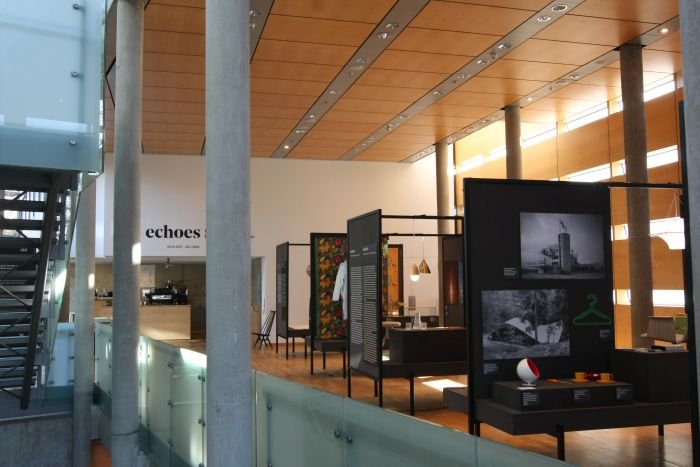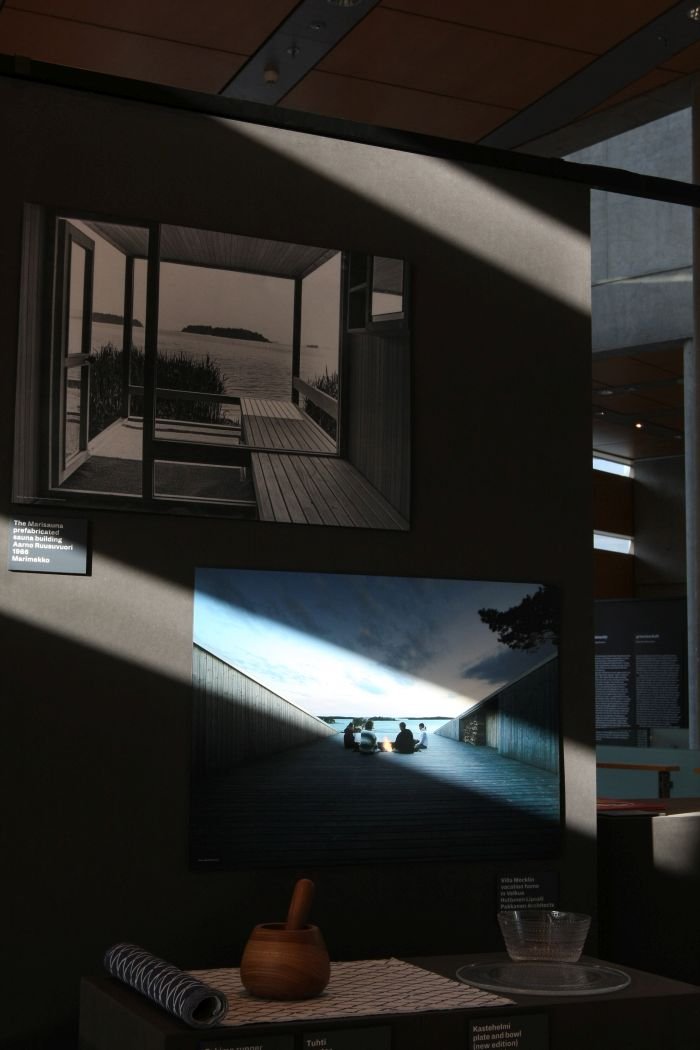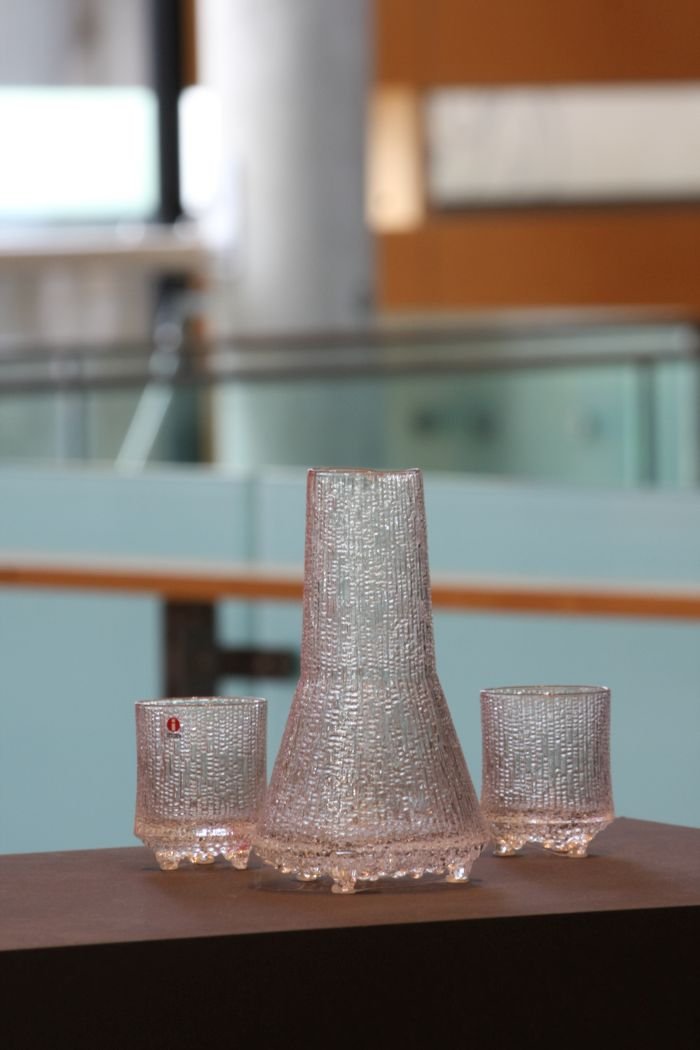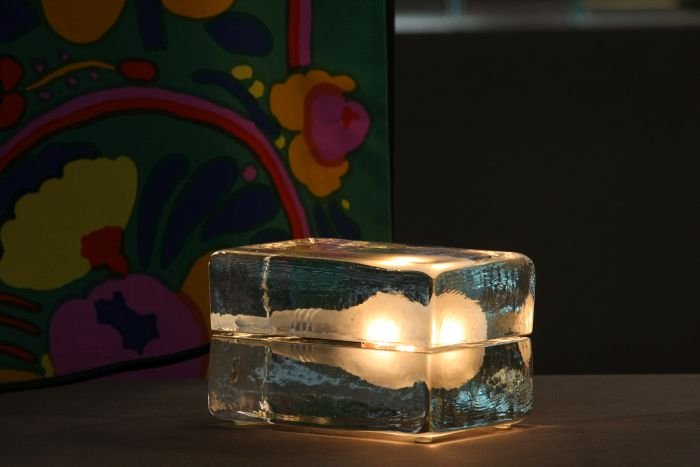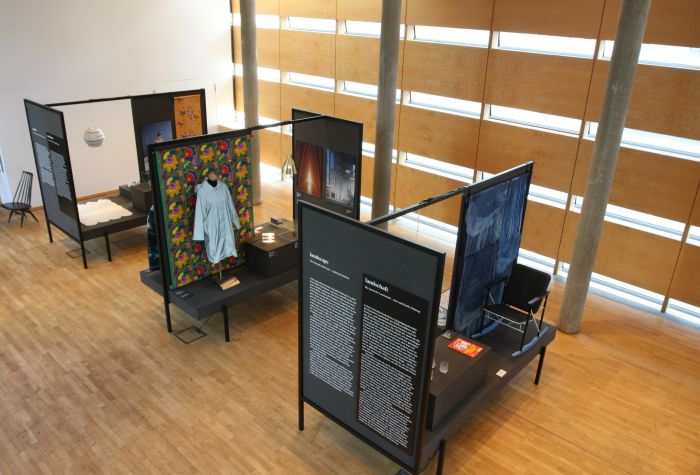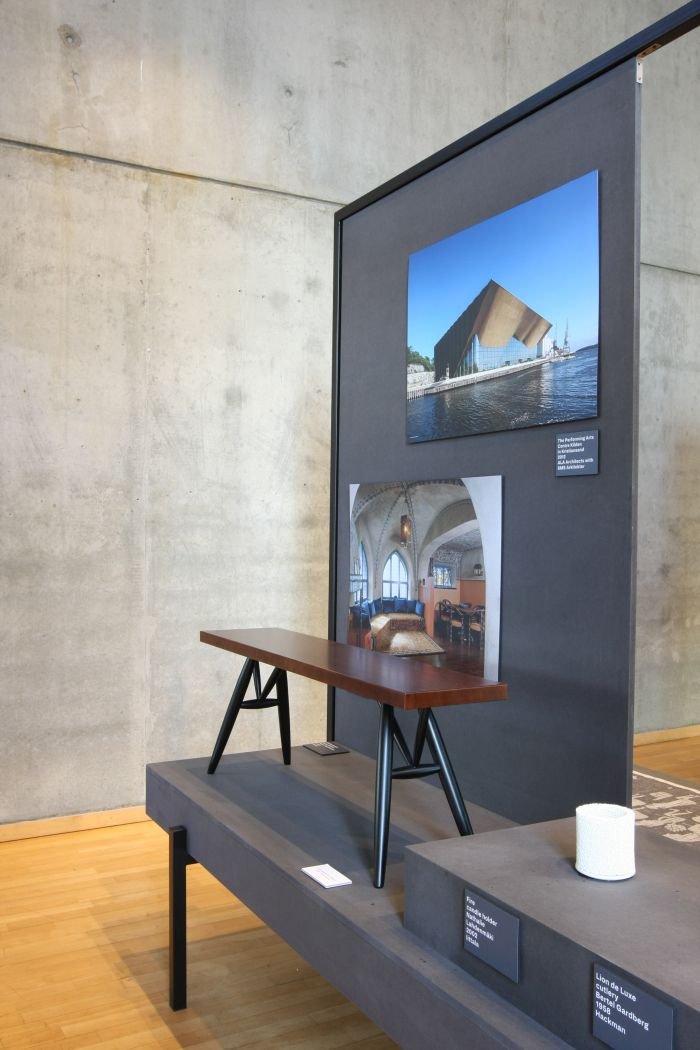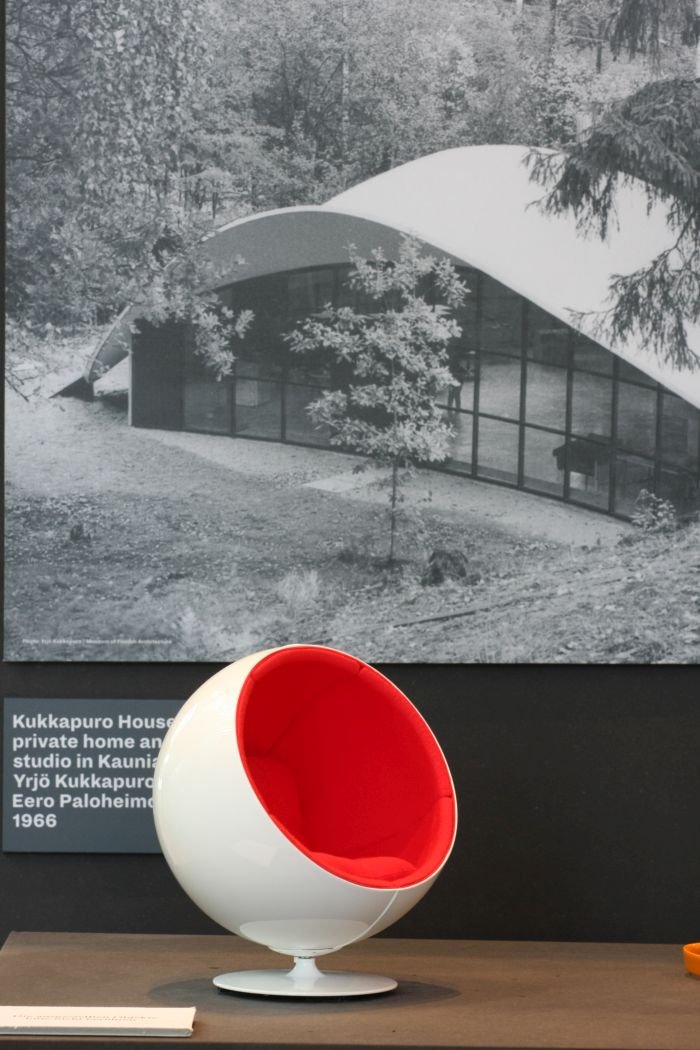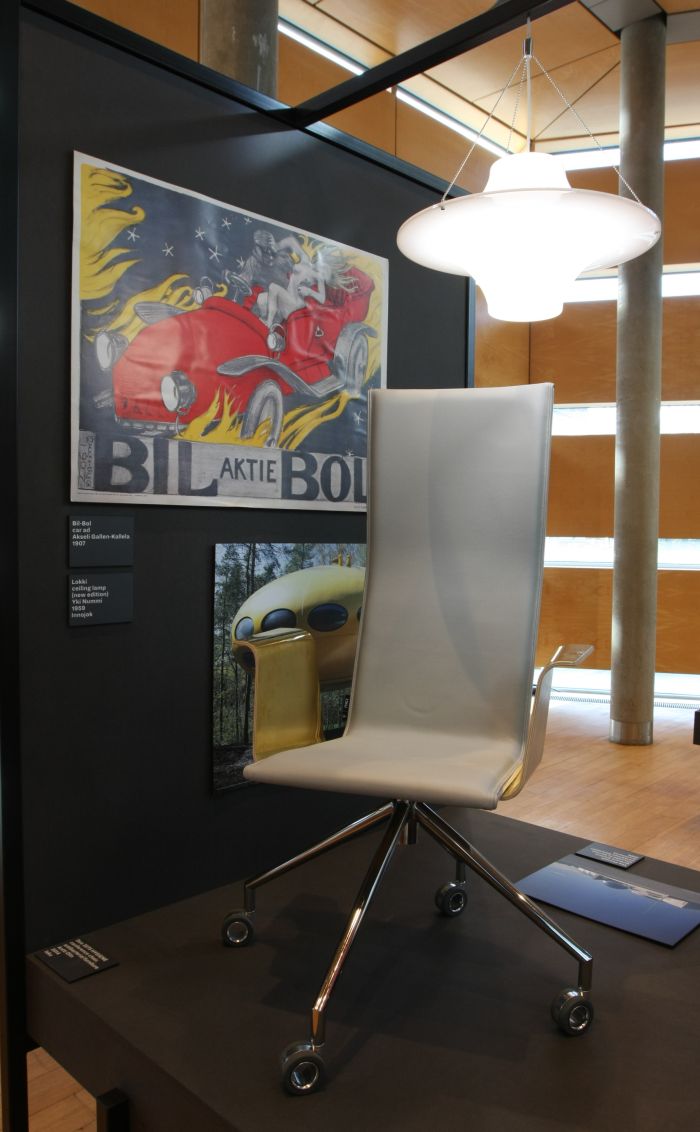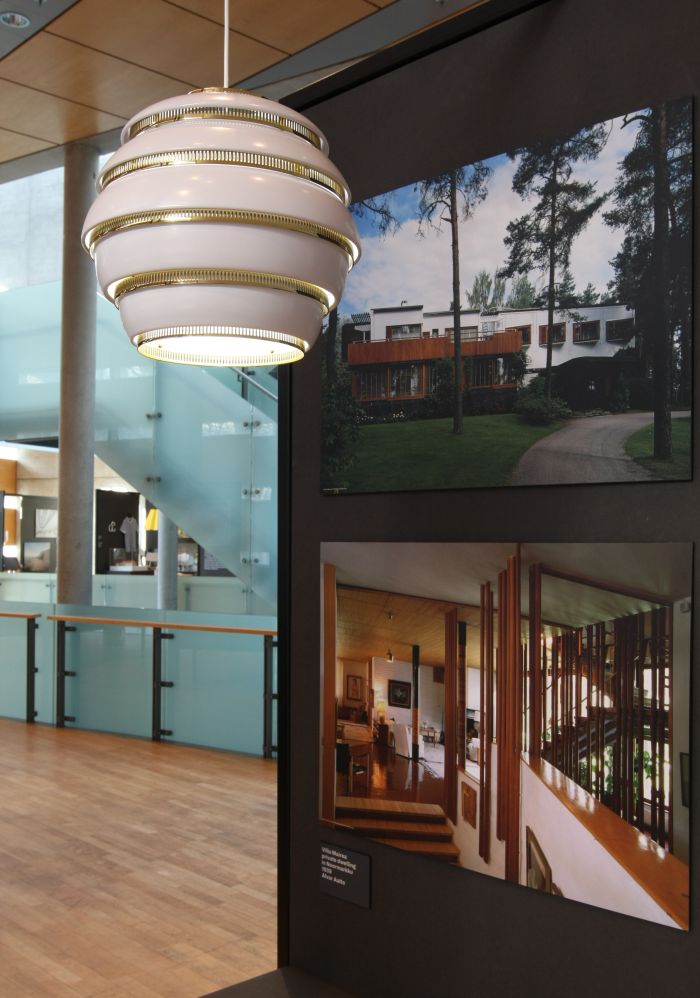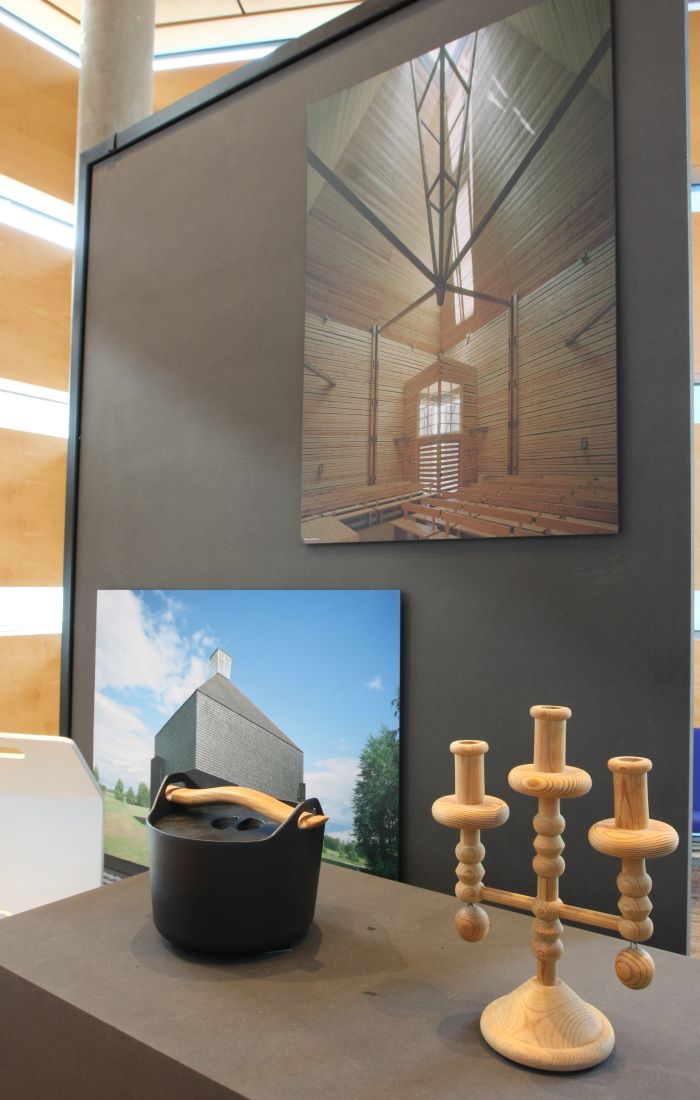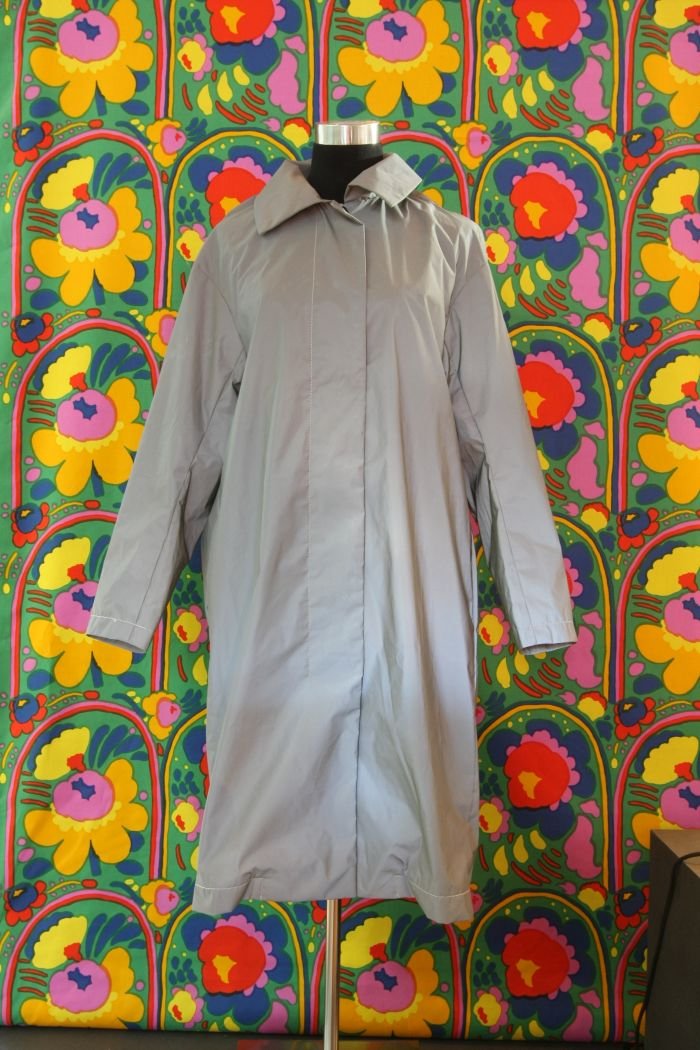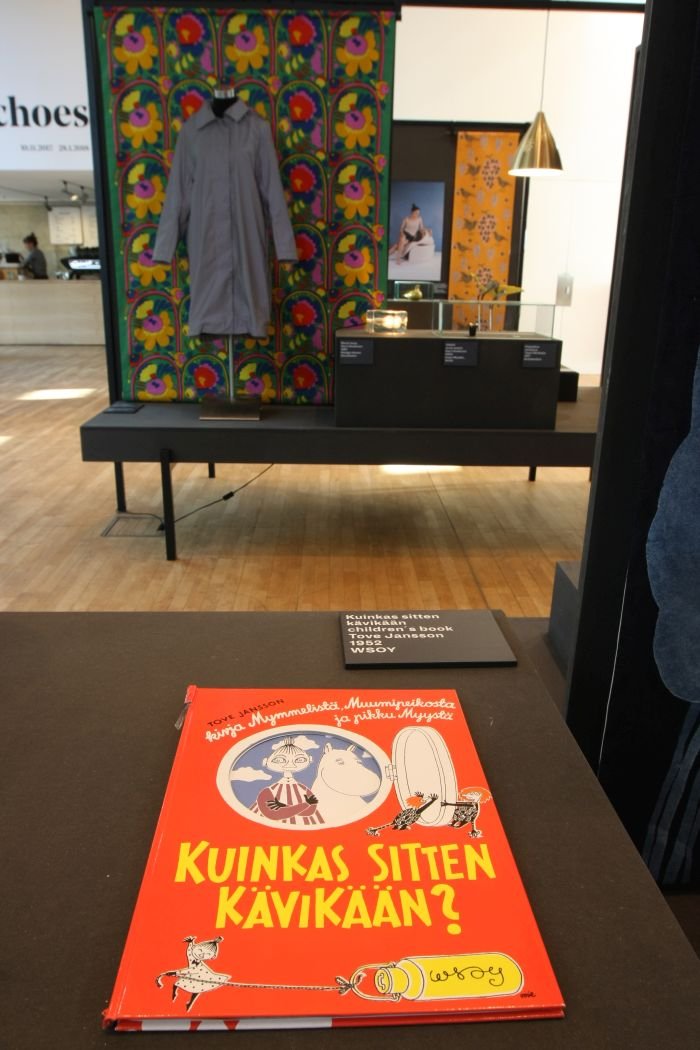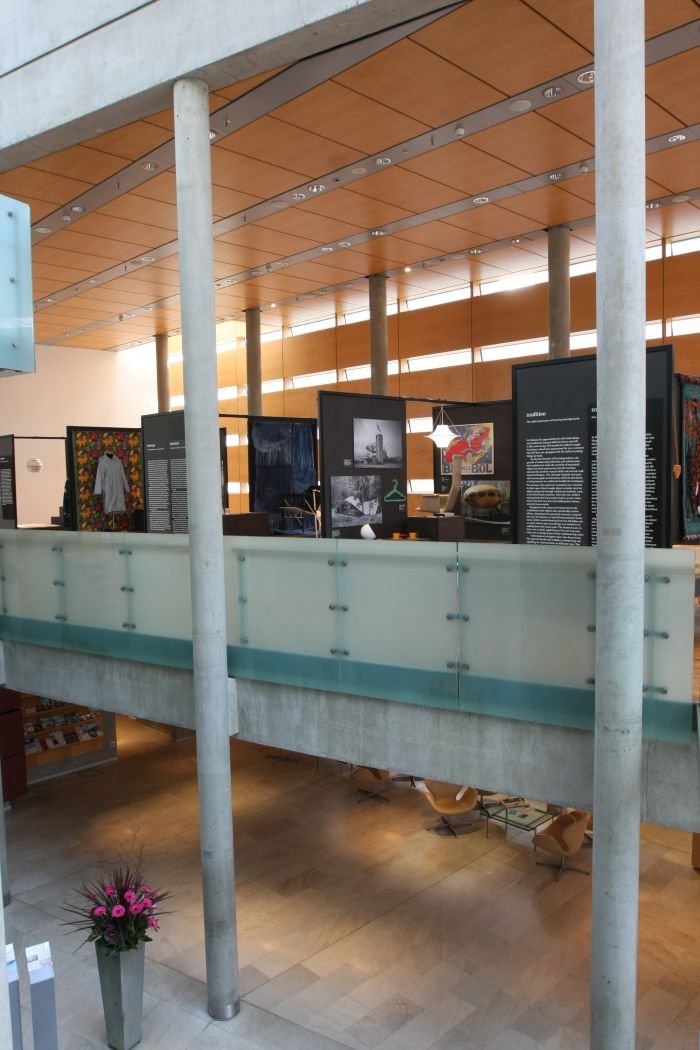As any fule kno, an echo requires a surface off which to reflect.
Otherwise it is just shouting into the void.
With the exhibition Echoes - 100 Years in Finnish Design and Architecture at the Felleshus, Berlin, that reflective surface is the traditions, cultures and landscapes of north-east Europe.
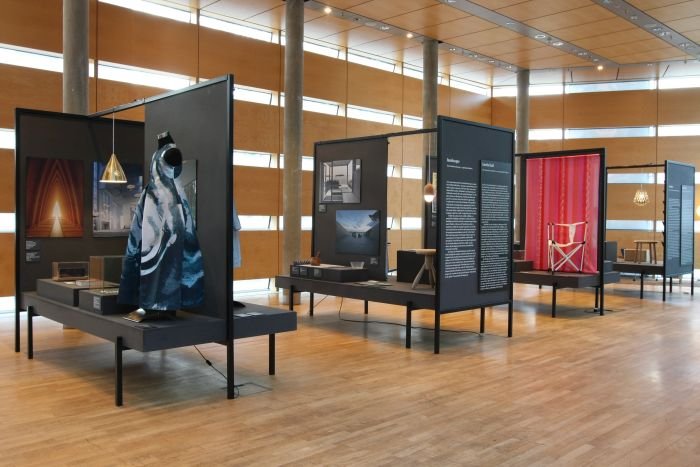
On December 6th 1917 the Finnish Republic declared its independence from Russia, an event that has been celebrated through 2017 in all manner of contexts and formats. Celebrations which, one presumes, will reach their crescendo on December 6th 2017.
Initiated by Finnish designer Laura Isoniemi and realised in cooperation with the Finnish Embassy in Warsaw, Echoes - 100 Years in Finnish Design and Architecture is not directly rooted in the centenary celebrations; however in spirit its timing is nigh-on perfect.
Originating in a lecture Laura held in 2014 titled "Echoes of Nature in Finnish Design and Architecture", Echoes the exhibition is divided into 8 sections which explore varying aspects of Finnishness, including Light & Dark, Tradition or Silence, through Finnish architecture and design. And while, yes, we would hope that many of you are now expecting us to decry such shameless usurpation of perceived national stereotypes for a perceived national architecture and design tradition, something akin to that nefarious manner by which marketing driven brand misuse such in order to try to sell you one of their particularly "Finnish" chairs or singularly "Finnish" lamps. We're not going to.
Sorry.
Because as an exhibition Echoes doesn't concern itself with a "Finnish" architecture and design tradition, isn't concerned with reducing architecture and design in Finland to a few easily Instagrammable buzzwords, isn't usurping anything, isn't selling Finnish architecture and design. But selling promoting Finland.
Architecture and Design are merely the conduits.
And particularly apposite ones at that.
As we've noted a couple of times in these pages, an important role in establishing the fledgling Finnish state was played by creatives such as the architect Eliel Saarinen or the composer Jean Sibelius, creatives who used their mastery of their mediums to try to approach an idea of Finnish identity; not in a tub-thumping, nationalistic, Greater Finland way, but as in an understanding of Finland's, and the Finns', place in global society and what connected/differentiated the Finn with other peoples.
The objects displayed in Echoes represents those reverberations which (more) contemporary Finnish architects and designers felt when they conversed with contemporary questions of Finland and Finnishness.
Without ever considering, far less aiming for, any idea of "Finnish". That's what marketeers do.
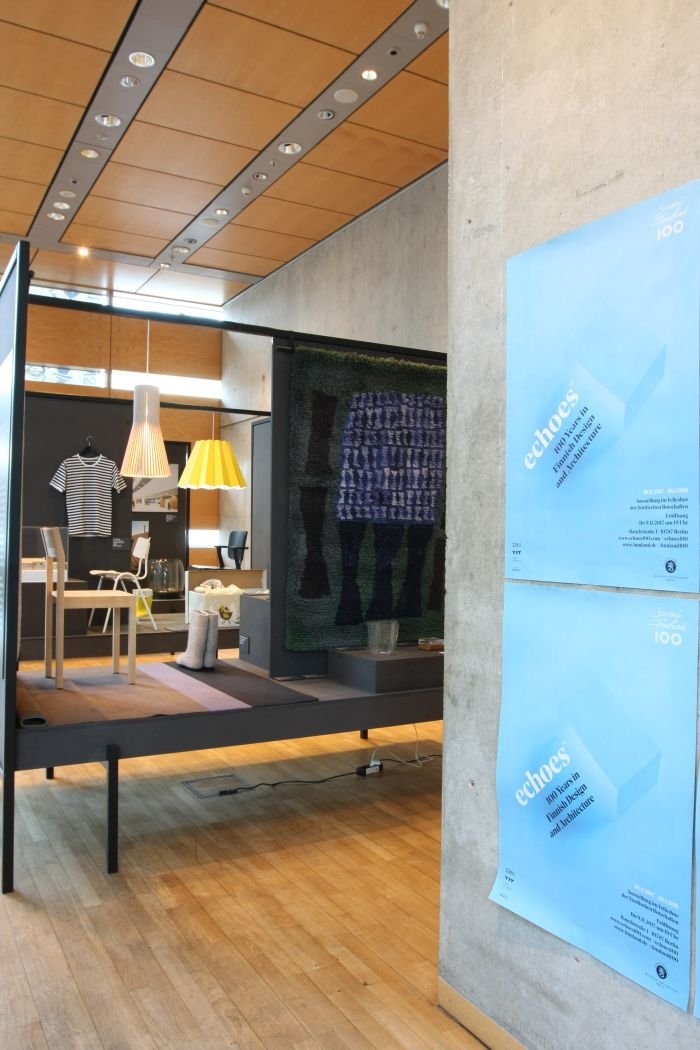
Presenting a mix of objects and photographs from across decades and genres, Echoes presents everything you would wish and expect to find in such an exhibition: Alvar Aalto ✔; Ilmari Tapiovaara ✔; Oiva Toikka ✔; Marimekko ✔; Tapio Wirkkala ✔; Liquorice ✔; Harri Koskinen ✔; Ice Hockey ✘; Eero Aarnio ✔; etc ✔; etc ✔; etc ✔; in addition to objects and projects which when perhaps not enjoying such a global popular appeal, help explain Finland and Finnish architecture/design, including, and amongst many others, Lahtiset felt boots, the Social Insurance Institution of Finland Maternity Package, The Futuro House by Matti Suuronen and a pair Nokia Hai wellington boots.
Despite the familiarity of much of the exhibition, it also contains the possibility of discovering the previously unknown, an important factor in any good exhibition, and among the new-to-us works which particularly caught our attention were the Modern Art table lamp by Yki Nummi, the so-called Shingle Church in Kärsämäki by Anssi Lassila and the A-509 Chair by Yrjö Kukkapuro
We first saw Echoes in Prague, it was our first port of call when we were in town for Designblok, and we spent a lot of time after our visit reflecting on the A-509 Chair.
And spent a lot of time in Berlin standing, kneeling, sitting, lying in front of it.
Presented in the section "Landscape", the A-509 looks, if we're being honest, as if it were created without a map. Far less an awareness of cartography.
You can't just hobble the component parts of a chair together and call it a chair. A chair has to have an integrity, a purpose, must understand its function in order to achieve it. The A-509 Chair doesn't have a clue what it is or wants to be, there is so much going on, at times contradictory, that the result is something unbearably loud. Like one of those Echoes that comes at you from different directions and results in disappointing static.
Indeed, for us the A-509 is such an uncoordinated and distressing work it forced us to investigate Yrjö Kukkapuro's oeuvre a little deeper. Which is why we're highlighting it, as an excellent example of that which we often repeat: you don't have to like everything you see in design and architecture exhibitions, that's not the reason for visiting them, much more one visits architecture and design exhibitions to better understand architecture and design, and/or architects and designers. Decisive alone is how you proceed with the impressions and information received.
And having studied Kukkapuro in a little more detail since Prague we're beginning to understand the A-509 as as an aberration in his portfolio, a portfolio which contains numerous chairs of a similar typology, but all, at least to judge from the photos, much more balanced, composed and coherent works. And therefore are very thankful for the opportunity to experience it. [Update 24.04.2023 Having spent a lot more time with the works and positions of Yrjö Kukkapuro we now distance ourselves from the above, we were very wrong, we didn't understand, we're very sorry. For our current thinking please see Yrjö Kukkapuro – Magic Room at Espoo Museum of Modern Art, EMMA]
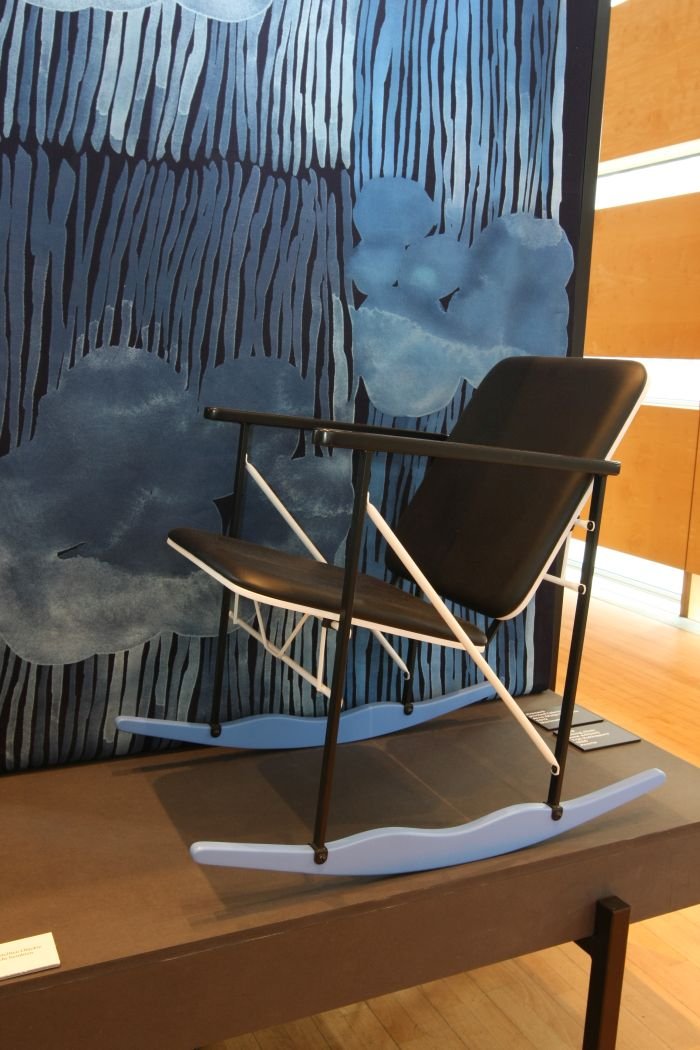
We did consider, as a brief nod to the previous Felleshus exhibition Much More Than One Good Chair to refer to Echoes - 100 Years in Finnish Design and Architecture as Much More Than One Good Aalto. That however would not only have been singularly unfunny, but would have skewed the exhibition, its position and message. If being completely accurate given that the intelligent and clearly conceived exhibition scenography, a layout which allows you to slalom you're way through the space like a skier through the forests of Lapland, is the work of the unrelated Elina Aalto.
Effortlessly mixing genres and positions while neatly demonstrating the scope and depth of architecture and design in Finland, Echoes is in no way a conclusive and comprehensive survey of a 100 years of Finnish architecture and design. But it doesn't set out to be. It sets out to explain the Echoes of Nature in Finnish Design and Architecture, and as a pleasingly paced, open and eminently accessible and entertaining exhibition it does just that. While also allowing for more than little celebration of a century of Finnish architecture and design.
Echoes was conceived as a touring exhibition and according to the Echoes website Berlin is the last stage of that tour. If we're honest we doubt that. Not because from principle we mistrust Finns, we don't, but because it doesn't feel like an exhibition that has run its course. Or perhaps better put, doesn't feel like an echo that has yet fallen silent.
Nor plans to anytime soon.
A bilingual English/German exhibition, Echoes - 100 Years in Finnish Design and Architecture runs at Felleshus, Nordic Embassies Cultural Centre, Rauchstraße 1, 10787 Berlin until Sunday January 28th
Full details can be found at www.nordischebotschaften.org and at www.echoes100.com
